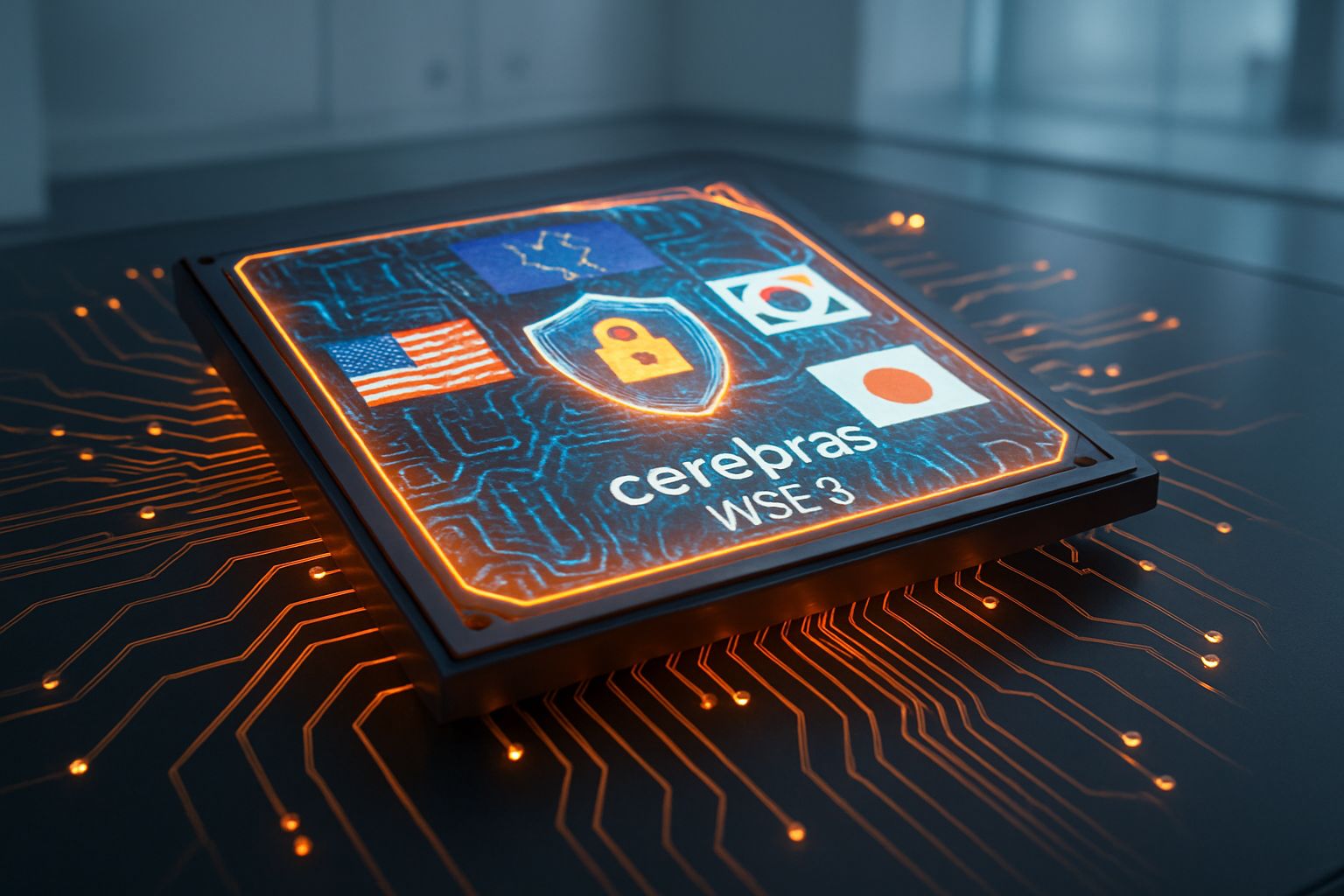
AI CERTS
7 hours ago
Cerebras Pushes Sovereign AI With Global Supercomputer Initiative
Understanding the announcement requires unpacking Cerebras’ hardware, business model, and geopolitical timing. Additionally, it demands clarity on the shift toward Sovereign AI as governments seek control over data, models, and systems. In contrast to cloud offerings, Cerebras proposes physical systems, secure clouds, and a government partnership keeping model ownership local. Therefore, the stakes extend beyond speed claims to questions of national resilience and procurement agility.

Why AI Sovereignty Matters
Policy analysts define Sovereign AI as the ability to control algorithms, data, and deployment locations under domestic law. Furthermore, tighter oversight reduces exposure to extraterritorial subpoenas and export controls that can interrupt critical infrastructure. Consequently, several capitals, including London and Abu Dhabi, now bake Sovereign AI targets into each national AI strategy. However, technical execution remains difficult without access to high-end compute and seasoned engineers.
These pressures explain mounting demand for local control solutions. Meanwhile, Cerebras claims its program can meet that demand at record speed.
Inside Cerebras Nations Program
Cerebras organizes the initiative around three pillars: compute, model co-development, and talent investment. First, the company co-designs on-prem AI supercomputers using its flagship CS-3 systems. Second, in-country research teams train domain or language models while host institutions retain weights. Third, Cerebras funds scholarships, workforce skilling, and policy workshops that align with each national AI strategy.
Additionally, the firm highlights recent deployments such as K2 Think, Jais, and Med42 as evidence of rapid delivery. Consequently, decision makers receive a packaged government partnership path rather than piecemeal vendor bids. These offerings create a turnkey appearance. However, hardware capabilities remain the pivotal differentiator, which the next section examines.
Ultimately, the company presents itself as an accelerator for Sovereign AI ambitions.
Cerebras Hardware Power Claims
Cerebras builds its compute offering on WSE-3 chips, a single wafer hosting 4 trillion transistors. Moreover, the vendor asserts that one CS-3 can outperform dozens of GPU nodes on large inference tasks. In September, partners reported 2,000 tokens per second on the K2 Think model, powered by these WSE-3 chips. Furthermore, marketing materials claim throughput exceeding 40 million tokens per second across distributed AI supercomputers by year end.
- Wafer-scale die is 56× larger than leading GPU chips, according to Cerebras.
- Vendor states training and inference run 20× faster on its AI supercomputers.
- K2 Think inference exceeded 2,000 tokens per second in public demo.
Nevertheless, independent laboratories have yet to publish peer-reviewed benchmarks matching those numbers. These performance headlines fuel interest, yet verification will shape procurement confidence. Subsequently, attention shifts toward model governance and data residency.
Such metrics, if validated, would position the hardware as a foundation for Sovereign AI deployments.
Securing Model Ownership Edge
Model ownership drives many Sovereign AI mandates because local leaders fear dependency on foreign clouds. Accordingly, Cerebras offers contracts that assign trained weights and IP to the host government. Furthermore, the company embeds engineers at national labs to tune models for local languages and governance rules. Such arrangements align with each national AI strategy while strengthening the government partnership declared in the initial pitch.
However, questions remain about audit rights, backdoor protections, and update control once the infrastructure reaches production. These governance clauses can decide deal approval. Consequently, buyers must review contract language with security agencies before hardware arrives.
Policy And Procurement Pathways
Cerebras has secured listings on Carahsoft and the DoD Tradewinds marketplace, simplifying U.S. public procurement. Additionally, early dialogues with the UK and UAE ministries suggest pilot evaluations are underway. Meanwhile, the Series G funding round gives suppliers confidence that Cerebras can finance large deployments. Nevertheless, observers note tight export control regimes could slow shipments to certain regions. Therefore, officials should synchronize procurement calendars with export license lead times and energy infrastructure buildouts.
- Request independent performance benchmarks before signing.
- Validate WSE-3 chips supply chain and firmware security.
- Align deployment with national AI strategy goals and budgets.
These steps protect taxpayers and ensure lasting value. Subsequently, leaders must balance risks against Sovereign AI advantages.
Key Risks And Unknowns
Independent journalists point to Cerebras’ heavy revenue concentration in UAE partner G42. In contrast, Nvidia enjoys a diverse customer base and mature software ecosystem. Moreover, the wafer-scale design may face yield challenges that increase costs if demand surges. Energy consumption also matters because large AI supercomputers require continuous cooling and resilient power infrastructure. Nevertheless, the 20× speed claim could offset operating costs if verified.
Finally, critics highlight limited open benchmarks comparing WSE-3 chips to matched GPU clusters. Any government partnership also bears reputational risk if performance disappoints citizens. These unknowns underline the need for transparent testing. Consequently, early adopters should publish results to strengthen market trust. If those gains materialize, Sovereign AI services could reach citizens with lower latency.
Strategic Takeaways For Leaders
Cerebras for Nations arrives at a moment when many capitals race to operationalize Sovereign AI. The program couples AI supercomputers, WSE-3 chips, and a structured government partnership to support each national AI strategy. However, independent benchmarks, energy planning, and transparent contracts must precede large infrastructure commitments. Leaders weighing adoption should consult procurement experts and publish early results to strengthen trust.
Professionals can enhance their expertise with the Chief AI Officer™ certification.
Consequently, informed talent and tested technology together will decide who captures the next wave of national AI value.



